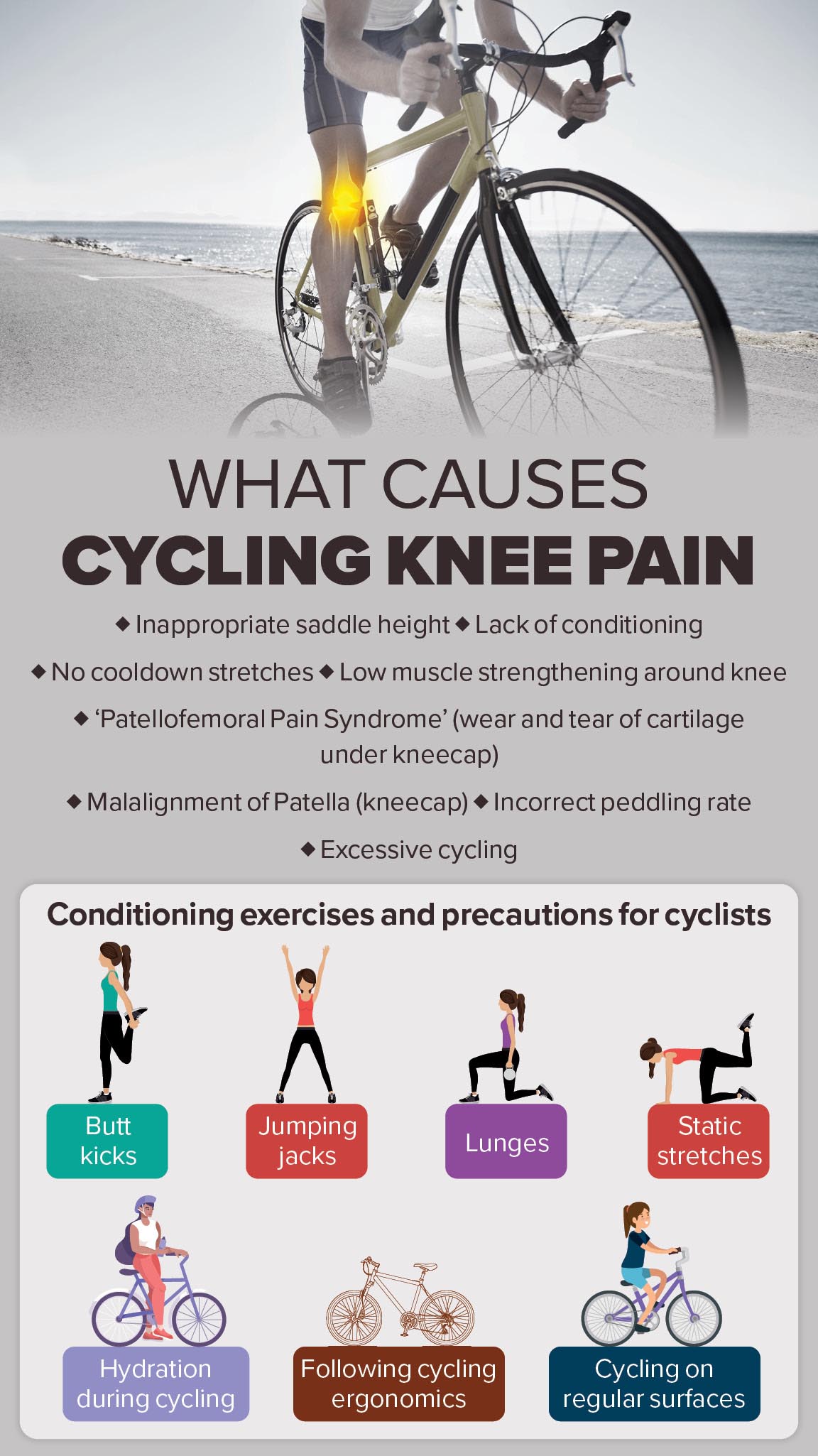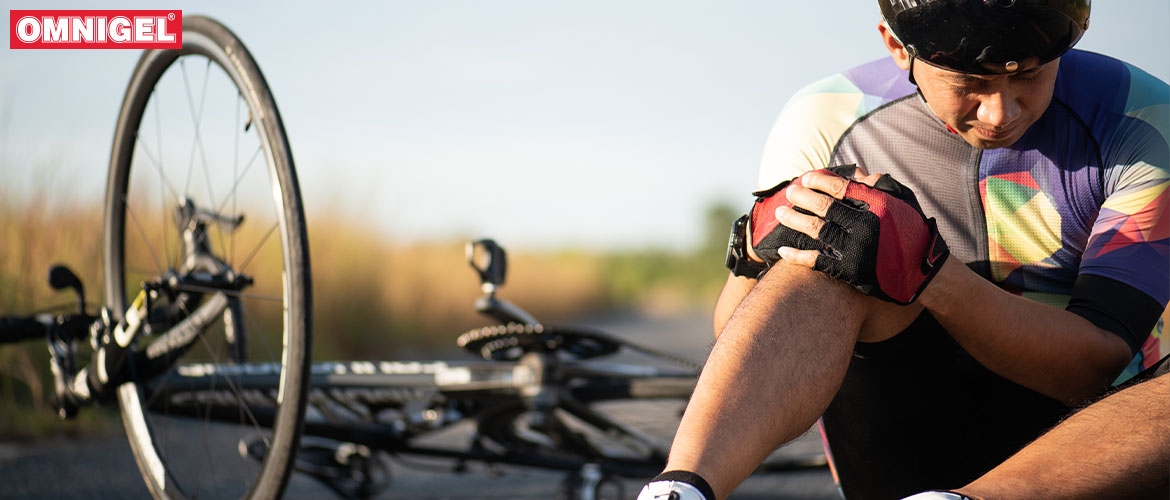Understanding the Benefits of Cycling for Arthritic Knees
Cycling is a low-impact exercise that has been shown to be highly beneficial for people with arthritic knees. By reducing joint stress and promoting gentle movement, cycling can help alleviate knee pain and improve overall mobility. In fact, studies have demonstrated that regular cycling can lead to significant improvements in knee function and reduced symptoms of arthritis.
One of the primary advantages of cycling for arthritic knees is its low-impact nature. Unlike high-impact activities such as running or jumping, cycling does not put excessive stress on the knee joint, making it an ideal exercise option for people with knee arthritis. Additionally, cycling is a weight-bearing exercise, which can help strengthen the muscles around the knee, providing further support and stability.
Cycling also offers a range of cardiovascular benefits, including improved heart health, increased lung function, and enhanced overall fitness. Regular cycling can help reduce inflammation and improve circulation, both of which can contribute to reduced knee pain and improved mobility. Furthermore, cycling can be adapted to suit individual fitness levels, making it an accessible exercise option for people of all ages and abilities.
For people with arthritic knees, incorporating cycling into their exercise routine can have a significant impact on their quality of life. By reducing knee pain and improving mobility, cycling can enable individuals to participate in daily activities with greater ease and confidence. Moreover, the mental health benefits of cycling, including reduced stress and improved mood, can also contribute to an overall sense of well-being.
In terms of specific benefits, cycling for arthritic knees can help to: reduce knee pain and inflammation, improve knee function and mobility, strengthen the muscles around the knee, and enhance overall cardiovascular health. By incorporating cycling into their exercise routine, individuals with arthritic knees can experience these benefits firsthand and improve their overall health and well-being.
How to Choose the Right Bike for Arthritic Knees
Selecting the right bike is crucial for people with arthritic knees who want to enjoy the benefits of cycling. A bike that is designed for comfort and ease of use can make a significant difference in the overall cycling experience. When choosing a bike, there are several factors to consider, including bike type, seat height, and handlebar position.
For people with arthritic knees, a hybrid or comfort bike is often the best option. These bikes are designed for comfort and feature a more upright riding position, which can help reduce strain on the knees. Look for a bike with a sturdy frame, a comfortable saddle, and a handlebar that is easy to reach.
Seat height is also an important consideration. A seat that is too high or too low can put unnecessary strain on the knees. Look for a bike with a seat that can be adjusted to fit your body, and make sure to test the bike before purchasing to ensure a comfortable fit.
Handlebar position is also crucial. A handlebar that is too far forward or too far back can cause strain on the knees and back. Look for a bike with a handlebar that is adjustable, and make sure to test the bike to ensure a comfortable riding position.
Some bike models that are well-suited for people with arthritic knees include the Trek FX and the Specialized Sirrus. These bikes are designed for comfort and feature a more upright riding position, making them ideal for people with knee arthritis.
In addition to considering the type of bike, it’s also important to think about the features that are important to you. For example, do you want a bike with a suspension system to absorb bumps and vibrations? Do you want a bike with a comfortable saddle and grips? Make a list of your priorities and look for a bike that meets your needs.
Ultimately, the right bike for arthritic knees is one that is comfortable, easy to use, and meets your specific needs. By considering the factors mentioned above and testing out different bikes, you can find a bike that will help you enjoy the benefits of cycling while minimizing strain on your knees.
Proper Cycling Technique for Arthritic Knees
Proper cycling technique is essential for people with arthritic knees to minimize strain on the joints and maximize the benefits of cycling. A well-executed cycling technique can help reduce knee pain and improve overall mobility. In this section, we will discuss the key elements of proper cycling technique for arthritic knees, including posture, pedaling, and gearing.
Posture is a critical aspect of cycling technique. Maintaining a comfortable and upright posture can help reduce strain on the knees and back. To achieve proper posture, make sure to sit comfortably on the saddle with your feet flat on the pedals and your hands gripping the handlebars. Keep your back straight and your shoulders relaxed, avoiding any leaning forward or backward.
Pedaling technique is also essential for people with arthritic knees. A smooth and efficient pedaling motion can help reduce strain on the knees and improve overall cycling performance. To achieve proper pedaling technique, focus on using your leg muscles to push the pedals down, rather than relying on your knees to absorb the impact. Keep your knees slightly bent and your weight evenly distributed on the pedals.
Gearing is another critical aspect of cycling technique for arthritic knees. Proper gearing can help reduce strain on the knees and improve overall cycling performance. To achieve proper gearing, make sure to use a gear that allows you to maintain a comfortable pedaling cadence, typically between 60-80 revolutions per minute. Avoid using gears that are too high or too low, as this can put excessive strain on the knees.
In addition to proper posture, pedaling, and gearing, there are several other tips to keep in mind when cycling with arthritic knees. Avoid putting excessive weight on the handlebars, as this can put strain on the knees and back. Keep your knees slightly bent and your weight evenly distributed on the pedals. Avoid making sudden movements or applying excessive force to the pedals, as this can put excessive strain on the knees.
By following these tips and maintaining proper cycling technique, people with arthritic knees can minimize strain on the joints and maximize the benefits of cycling. Remember to always listen to your body and adjust your technique as needed to avoid discomfort or pain.
Creating a Cycling Routine for Arthritic Knees
Creating a cycling routine that is tailored to the needs of people with arthritic knees is crucial for maximizing the benefits of cycling while minimizing the risk of injury or discomfort. A well-structured cycling routine can help improve cardiovascular health, increase mobility, and reduce knee pain. In this section, we will discuss the key elements of creating a cycling routine for arthritic knees, including frequency, duration, and intensity.
Frequency is an important consideration when creating a cycling routine for arthritic knees. It is recommended to start with a frequency of 2-3 times per week and gradually increase as the body adapts. This will allow the knees to adjust to the demands of cycling and reduce the risk of injury or discomfort.
Duration is also a critical factor in creating a cycling routine for arthritic knees. It is recommended to start with shorter sessions of 20-30 minutes and gradually increase as the body adapts. This will allow the knees to adjust to the demands of cycling and reduce the risk of injury or discomfort.
Intensity is another important consideration when creating a cycling routine for arthritic knees. It is recommended to start with a low-intensity routine and gradually increase as the body adapts. This will allow the knees to adjust to the demands of cycling and reduce the risk of injury or discomfort.
Gradual progression is key when creating a cycling routine for arthritic knees. It is essential to listen to the body and adjust the routine as needed to avoid discomfort or pain. This may involve reducing the frequency, duration, or intensity of the routine or incorporating rest days into the schedule.
In addition to frequency, duration, and intensity, there are several other tips to keep in mind when creating a cycling routine for arthritic knees. Warm up and cool down exercises can help reduce the risk of injury or discomfort, while incorporating strength training and stretching exercises can help improve overall cycling performance.
By following these tips and creating a cycling routine that is tailored to the needs of people with arthritic knees, individuals can maximize the benefits of cycling while minimizing the risk of injury or discomfort. Remember to always listen to the body and adjust the routine as needed to avoid discomfort or pain.
Strengthening the Muscles Around the Knee
Strengthening the muscles around the knee is essential for people with arthritic knees who want to improve their overall knee health and reduce pain. The quadriceps, hamstrings, and calf muscles are the primary muscles that support the knee joint, and strengthening these muscles can help improve knee stability and reduce pain.
The quadriceps muscles are located on the front of the thigh and are responsible for straightening the knee. Strengthening the quadriceps can help improve knee extension and reduce pain. Exercises such as leg press, leg extensions, and squats can help strengthen the quadriceps.
The hamstrings muscles are located on the back of the thigh and are responsible for bending the knee. Strengthening the hamstrings can help improve knee flexion and reduce pain. Exercises such as leg curls, deadlifts, and glute bridges can help strengthen the hamstrings.
The calf muscles are located on the back of the lower leg and are responsible for ankle movement. Strengthening the calf muscles can help improve ankle stability and reduce pain. Exercises such as calf raises, toe curls, and heel raises can help strengthen the calf muscles.
Incorporating strength training into a cycling routine can help improve overall knee health and reduce pain. It is recommended to start with low-intensity exercises and gradually increase the intensity as the muscles become stronger. It is also essential to listen to the body and adjust the routine as needed to avoid discomfort or pain.
In addition to strengthening the muscles around the knee, it is also essential to incorporate stretching and foam rolling into a cycling routine. Stretching can help improve flexibility and reduce muscle tension, while foam rolling can help reduce muscle soreness and improve recovery.
By incorporating strength training, stretching, and foam rolling into a cycling routine, people with arthritic knees can improve their overall knee health and reduce pain. Remember to always listen to the body and adjust the routine as needed to avoid discomfort or pain.
Managing Knee Pain While Cycling
Managing knee pain while cycling is crucial for people with arthritic knees who want to continue enjoying the benefits of cycling. Knee pain can be a common issue for cyclists, especially those with arthritic knees. However, there are several ways to manage knee pain while cycling, including stretching, foam rolling, and using pain-relieving creams or ointments.
Stretching is an essential part of any cycling routine, especially for people with arthritic knees. Stretching can help improve flexibility and reduce muscle tension, which can help alleviate knee pain. Some essential stretches for cyclists include the quadriceps stretch, hamstring stretch, and calf stretch.
Foam rolling is another effective way to manage knee pain while cycling. Foam rolling can help reduce muscle soreness and improve recovery, which can help alleviate knee pain. Focus on rolling the quadriceps, hamstrings, and calf muscles, as these are the primary muscles that support the knee joint.
Using pain-relieving creams or ointments can also help manage knee pain while cycling. Topical creams or ointments containing capsaicin, arnica, or menthol can help reduce pain and inflammation. Apply the cream or ointment to the affected area before or after cycling to help alleviate knee pain.
Rest and recovery are also essential for managing knee pain while cycling. Adequate rest and recovery can help the body repair and rebuild damaged tissues, which can help alleviate knee pain. Make sure to take regular breaks during cycling and prioritize rest and recovery after each ride.
In addition to these tips, it’s also essential to listen to the body and adjust the cycling routine as needed to avoid discomfort or pain. If knee pain persists or worsens, consult with a healthcare professional or cycling coach to develop a personalized plan for managing knee pain while cycling.
By incorporating these tips into a cycling routine, people with arthritic knees can effectively manage knee pain and continue enjoying the benefits of cycling. Remember to always prioritize rest and recovery, and listen to the body to avoid discomfort or pain.
Success Stories: Cycling with Arthritic Knees
Cycling has been a game-changer for many people with arthritic knees. By incorporating cycling into their exercise routine, individuals with arthritic knees have been able to manage their pain, improve their mobility, and enhance their overall quality of life. In this section, we will share inspiring stories of people who have successfully managed their arthritic knee pain through cycling.
One such story is that of Sarah, a 55-year-old woman who was diagnosed with osteoarthritis in her knees. After trying various treatments, Sarah discovered cycling and was amazed at how it helped alleviate her knee pain. She started with short rides and gradually increased her distance and frequency. Today, Sarah is able to ride up to 20 miles without experiencing any significant pain.
Another inspiring story is that of John, a 62-year-old man who had been struggling with knee pain for years. After undergoing knee replacement surgery, John was determined to get back on his bike. He started with gentle rides and gradually increased his intensity. Today, John is able to ride up to 30 miles without experiencing any significant pain.
These stories demonstrate the potential of cycling to help manage arthritic knee pain. By incorporating cycling into their exercise routine, individuals with arthritic knees can improve their mobility, reduce their pain, and enhance their overall quality of life.
In addition to these stories, there are many other examples of people who have successfully managed their arthritic knee pain through cycling. By sharing these stories, we hope to inspire others to try cycling as a way to manage their knee pain.
Cycling is a low-impact exercise that can be adapted to suit individual needs and abilities. Whether you’re a beginner or an experienced cyclist, there are many ways to incorporate cycling into your exercise routine. By starting with short rides and gradually increasing your distance and frequency, you can experience the many benefits of cycling for yourself.
Maintaining a Healthy Knee Through Cycling
Cycling is a low-impact exercise that can be an effective way to maintain a healthy knee, especially for people with arthritic knees. By incorporating cycling into their exercise routine, individuals can improve their knee health, reduce pain, and enhance their overall quality of life.
To maintain a healthy knee through cycling, it’s essential to prioritize bike maintenance, safety, and ongoing education. Regular bike maintenance can help ensure that the bike is in good working condition, which can reduce the risk of injury or discomfort. Safety is also crucial, and cyclists should always wear protective gear, such as helmets and knee pads, and follow traffic rules and regulations.
Ongoing education is also vital for maintaining a healthy knee through cycling. Cyclists should stay informed about the latest research and developments in cycling and knee health, and seek advice from healthcare professionals or cycling experts if needed. By staying informed and taking proactive steps to maintain their knee health, cyclists can enjoy the many benefits of cycling while minimizing the risk of injury or discomfort.
In addition to bike maintenance, safety, and ongoing education, there are several other tips for maintaining a healthy knee through cycling. Cyclists should prioritize proper cycling technique, including posture, pedaling, and gearing, to reduce the risk of injury or discomfort. They should also incorporate strength training and stretching exercises into their routine to improve knee stability and flexibility.
By following these tips and prioritizing bike maintenance, safety, and ongoing education, cyclists can maintain a healthy knee and enjoy the many benefits of cycling. Whether you’re a beginner or an experienced cyclist, there are many ways to incorporate cycling into your exercise routine and improve your knee health.
Cycling is a low-impact exercise that can be adapted to suit individual needs and abilities. By starting with short rides and gradually increasing distance and frequency, cyclists can experience the many benefits of cycling for themselves. Whether you’re looking to improve your knee health, reduce pain, or enhance your overall quality of life, cycling can be an effective and enjoyable way to achieve your goals.





:max_bytes(150000):strip_icc()/VWH_Illustration_Exercises-for-Knee-Pain_Illustrator_Laura-Porter_Final-4565a0afbe3f4e1abd17fa318218e37b.jpg)



